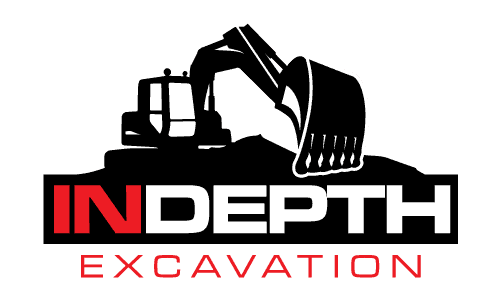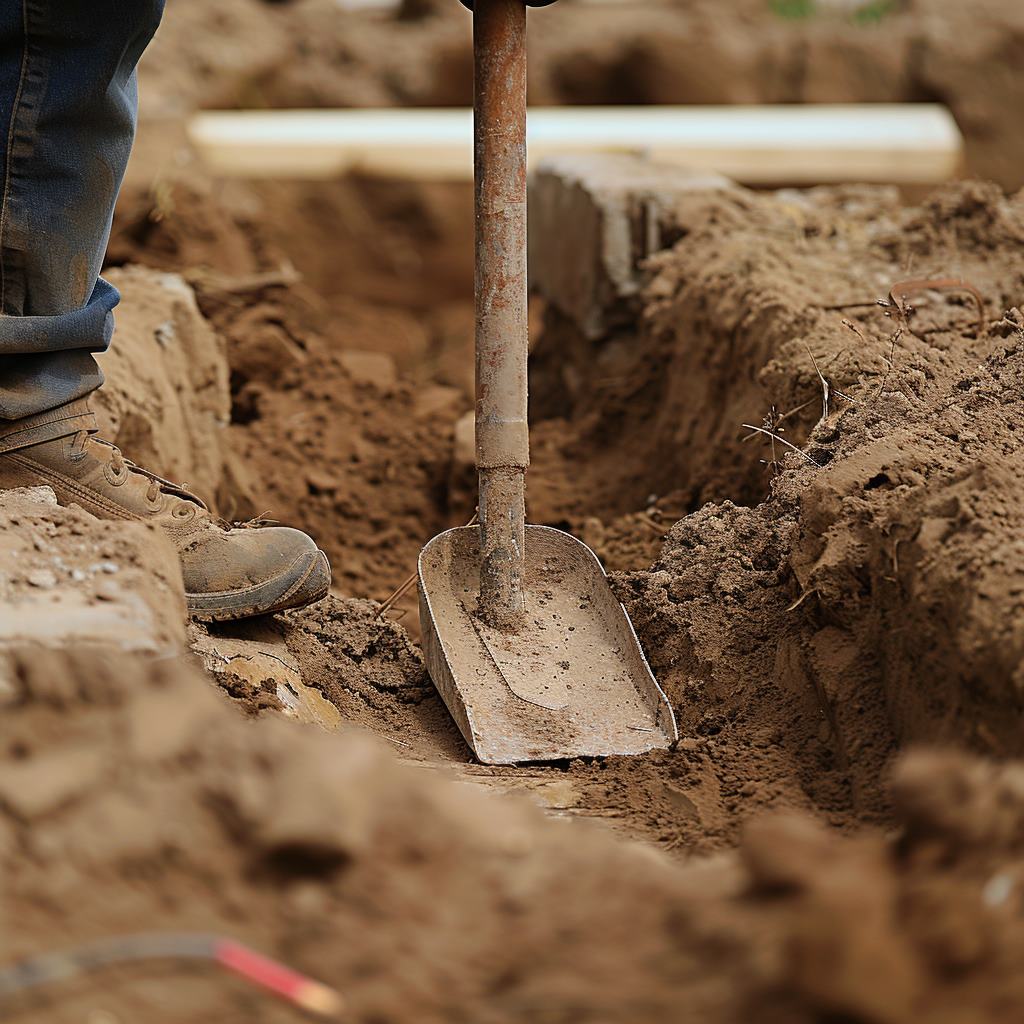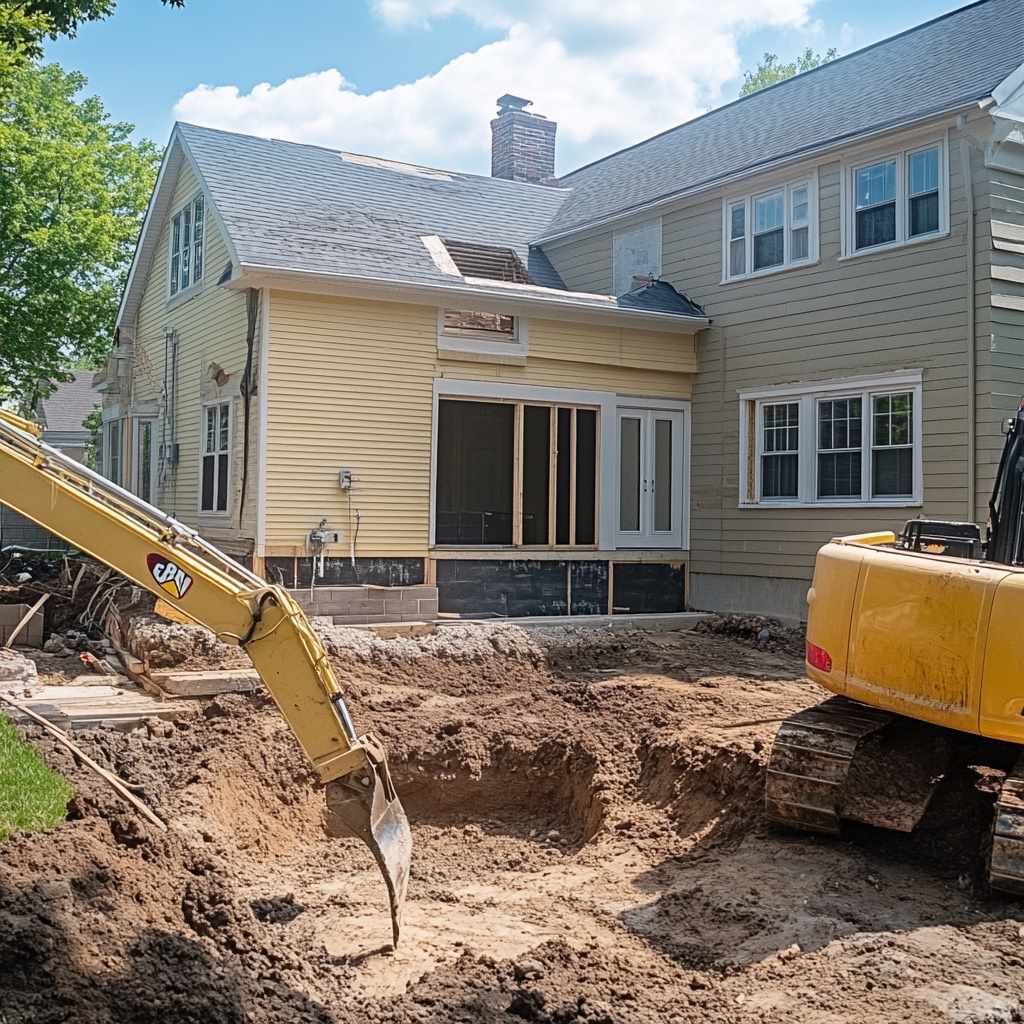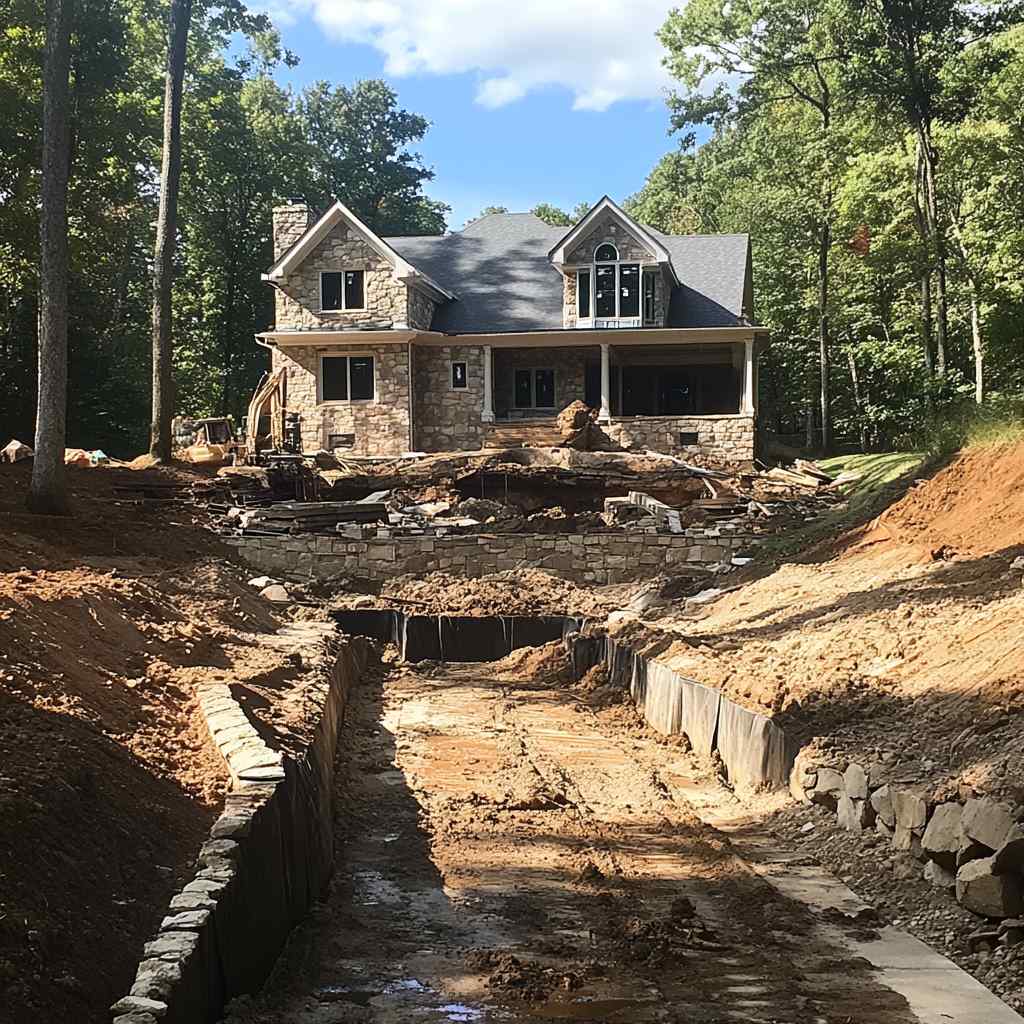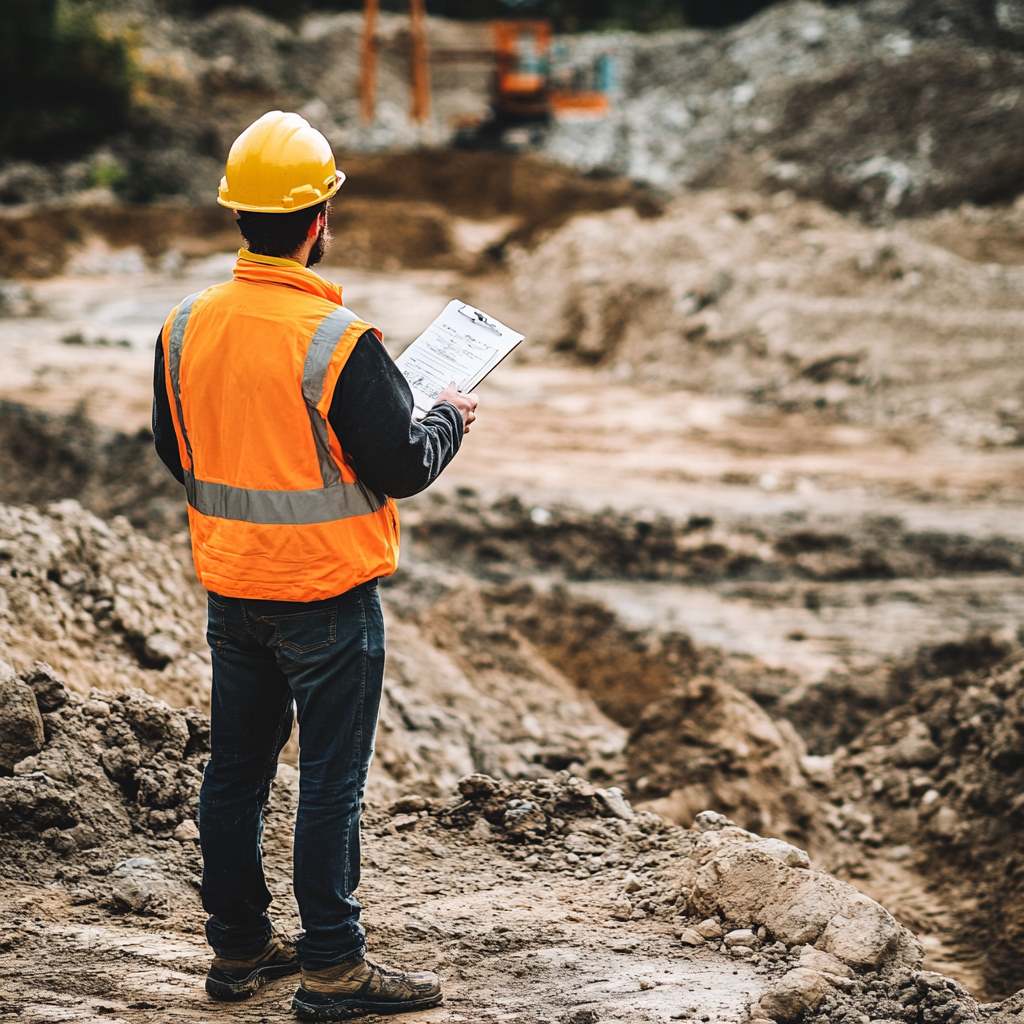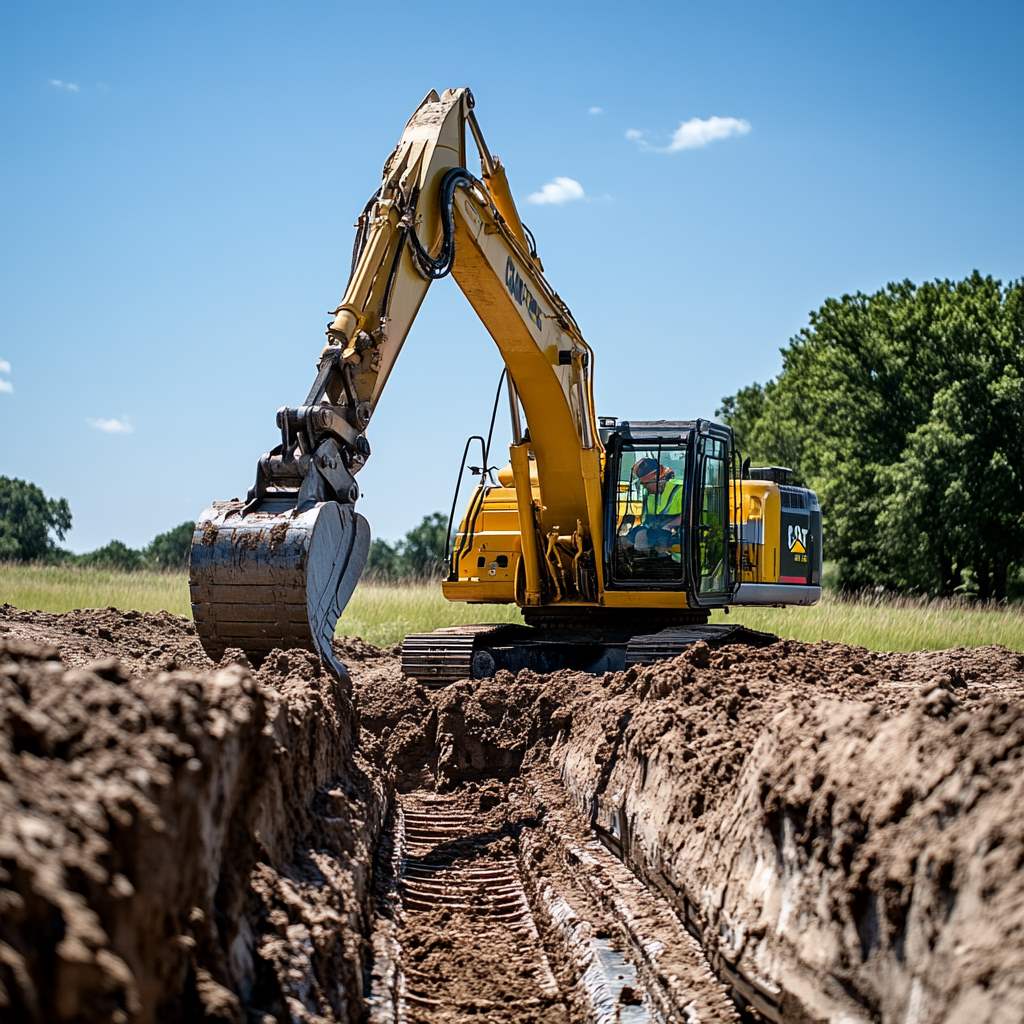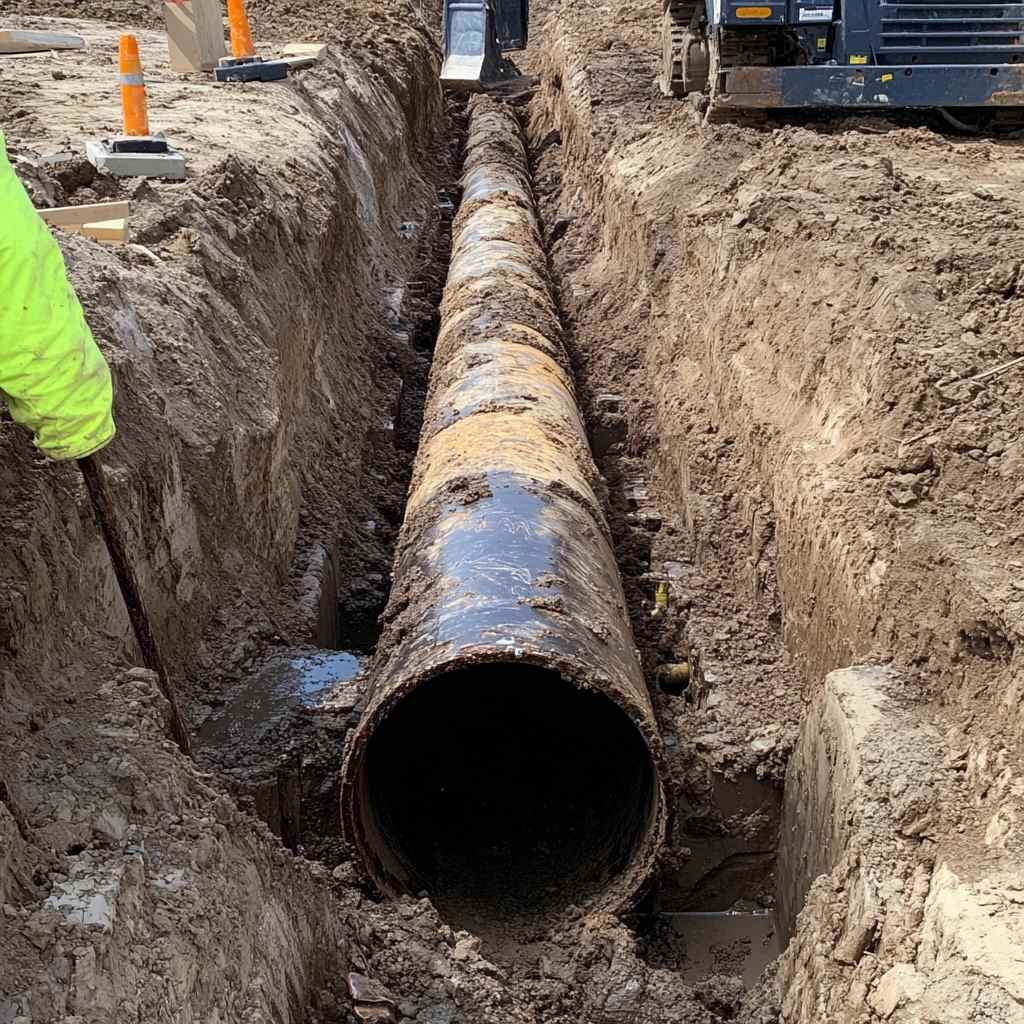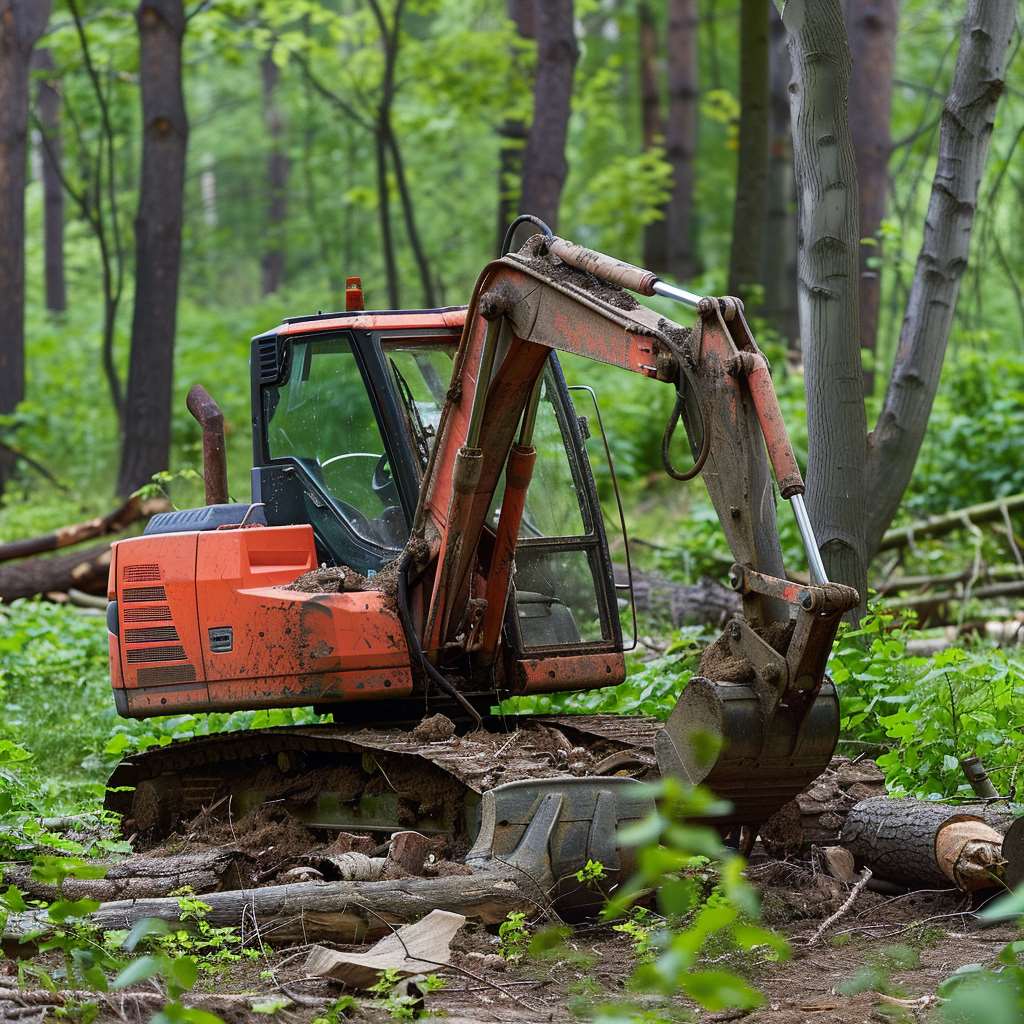Before any structure takes shape, its future rests in the ground beneath it. A strong foundation sets the tone for everything above it, supporting walls, weight, and time. When it comes to foundation excavation and basement dig-outs, getting it right from the start avoids costly issues later.
Professional excavation services, like Indepth Excavation, bring the right tools and experience to handle the job safely and efficiently. With expert oversight, you avoid common mistakes, keep the project moving, and protect long-term structural stability.
Understanding Excavation for Basement and Foundation Construction
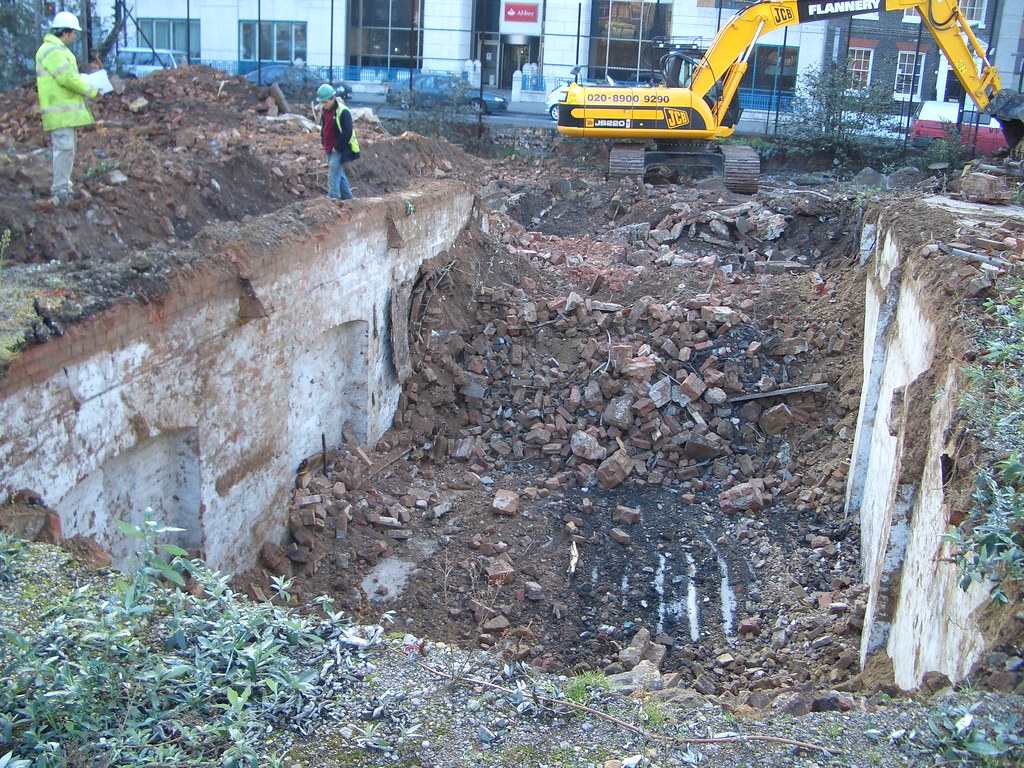
Excavation is the process of removing soil and rocks to prepare a site for construction. In basement and foundation projects, excavation is important for creating the space where your foundation will be created.
Excavation is more than just digging a hole, it’s making space for something permanent. In basement and foundation work, it’s about more than removing dirt. It’s about accuracy. Go too shallow or too deep, and you risk uneven settling, cracks, and drainage problems down the line.
Each type of foundation needs its own approach. Slab foundations don’t require much digging, just enough to level the site and clear away any debris. Crawl spaces go a little deeper, leaving room for airflow and utility access. If you’re building a full basement, you’ll need to go much deeper, often with large machines like excavators and bulldozers, to get the job done efficiently.
The takeaway? Your foundation is only as good as the hole it’s built in. A bad dig leads to bigger problems later.
Planning the Excavation Process
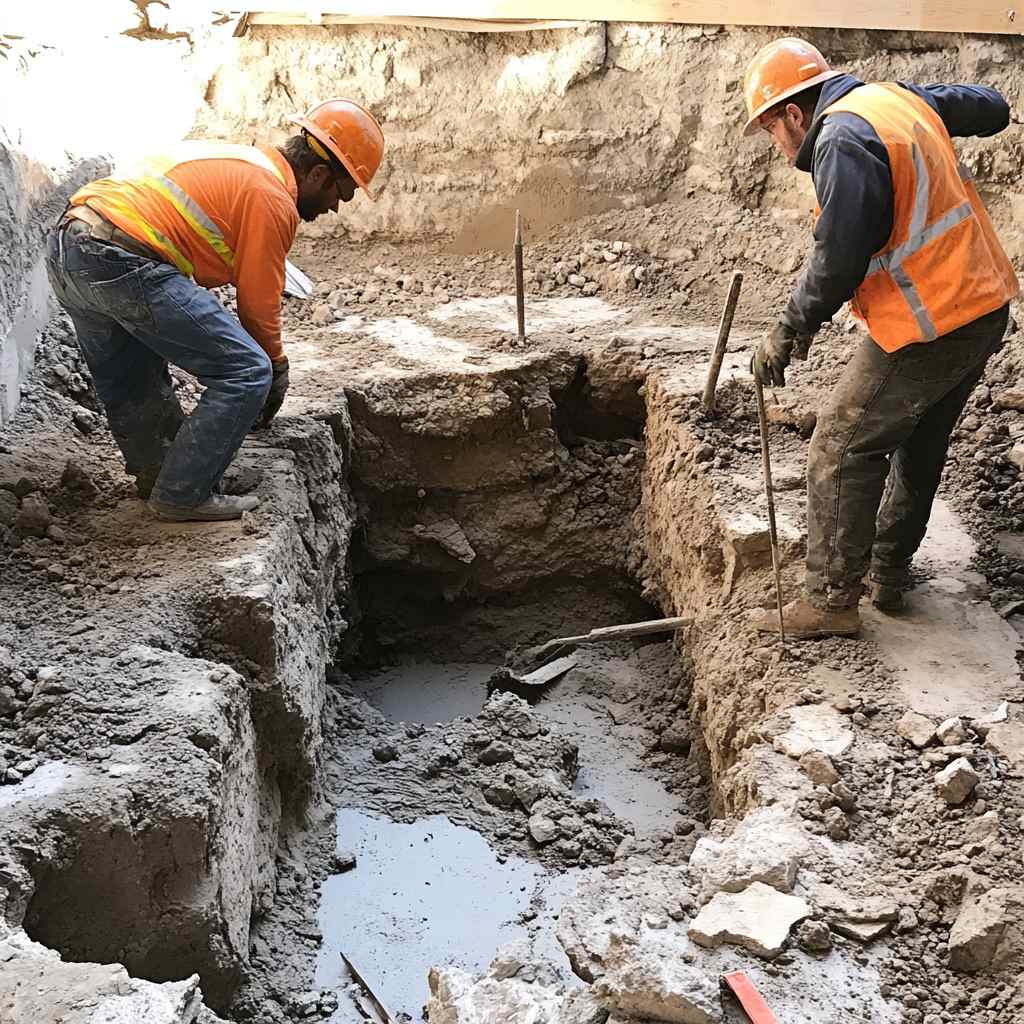
No one just shows up with a backhoe and starts digging. Before any excavation starts, the site needs to be carefully reviewed. You’ve got to know what kind of soil you’re working with, where the underground utilities are, and how the land slopes. These things shape every step of the process.
Once the site’s assessed, it’s time to map it all out. That’s what blueprints are for. They don’t just show you how deep or wide to dig, they tell the whole story. Where drainage needs to go. How to support the trench walls. Where to set up equipment access. Without that roadmap, the project can quickly go off track.
Then the crew gets to work prepping the space. That means clearing vegetation, removing debris, and marking the excavation lines. Safety gear goes up.
Trenches might need shoring or slope support, depending on the soil. Every bit of that prep makes the excavation smoother, safer, and more predictable when machines finally break ground
Having a detailed plan and following these steps makes a smoother and safer excavation process. Always remember that a well-planned excavation is the foundation of a successful construction project.
The Excavation Process
Once it’s time to dig, everything needs to run like clockwork. The first task is clearing the site. That means removing any trees, stumps, rocks, or leftover structures. It’s not glamorous work, but it sets the stage.
Digging
Then comes the digging. Excavators and backhoes take center stage here, cutting through the soil according to the dimensions mapped out in your plans. Precision matters, a few inches off can cause problems down the road, especially for basement walls and drainage.
Grading
After digging, grading is essential. It involves leveling the ground to guarantee stability. Proper grading helps in preventing water accumulation around the foundation. Accurate grading is vital for the durability of your foundation.
Equipment Used
- Excavators: Ideal for digging and moving large amounts of soil.
- Backhoes: Useful for both digging and loading.
- Bulldozers: Perfect for pushing large quantities of earth and grading.
Safety Measures
- Wear protective gear such as helmets and gloves.
- guarantee proper site barricading to prevent unauthorized access.
- Follow depth-specific safety measures to prevent accidents.
By adhering to these steps and using the right equipment, you make sure of a successful and safe excavation process for your basement or foundation construction.
Addressing Common Excavation Challenges
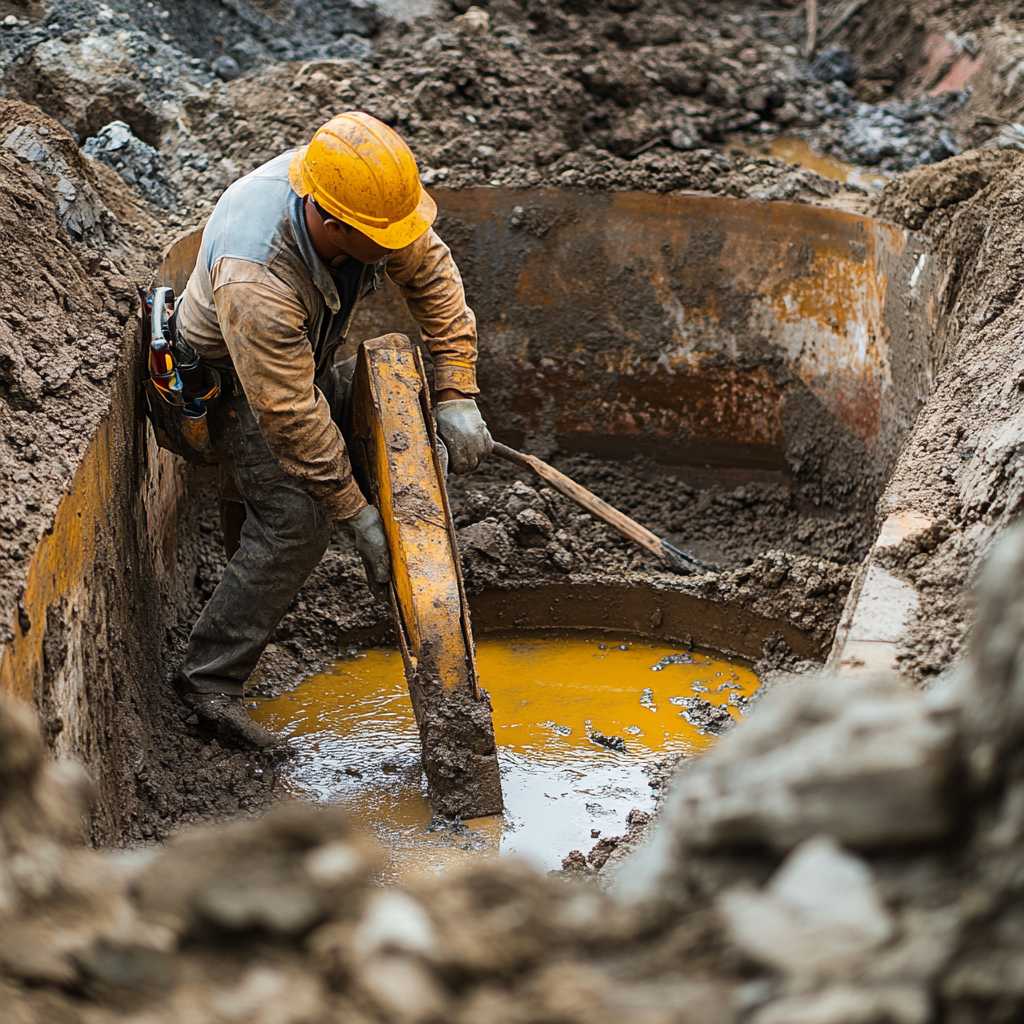
No two sites are the same, and some bring more challenges than others. Soil type is one of the biggest. Sandy soil shifts too easily, and rocky ground puts up a fight. You’ve got to adjust your approach depending on what you’re digging into.
Water is another big factor. A high water table can stall progress fast. Installing proper drainage systems is essential. Without proper drainage or a sump pump, you’re fighting against mud and instability. Planning ahead with gravel layers or trench drains makes a big difference.
And then there’s erosion. If the soil starts to wash out or cave in, everything becomes more dangerous and unpredictable. You can prevent a lot of that with smart planning, things like silt fencing, retaining walls, or even vegetation that keeps the ground intact.
Steep slopes and rocky terrain just add another layer. In those cases, terracing and specialized equipment come into play. You’re not just digging anymore, you’re shaping the land so it can safely hold a structure.
High water tables can lead to flooding and instability. Installing proper drainage systems is essential. You should monitor water levels regularly and use sump pumps or gravel layers to manage excess water.
Guaranteeing Stability and Preventing Soil Erosion
Soil erosion can compromise the stability of your project. To prevent this, implement retaining walls, silt fences, and erosion control blankets. Reinforce slopes with vegetation or synthetic materials.
Handling Steep Slopes and Rocky Terrains
Excavating on steep slopes requires special attention. Use terracing or benching techniques to create steps and reduce the risk of slips. For rocky terrains, advanced machinery might be necessary.
The Role of Professional Excavation Contractors
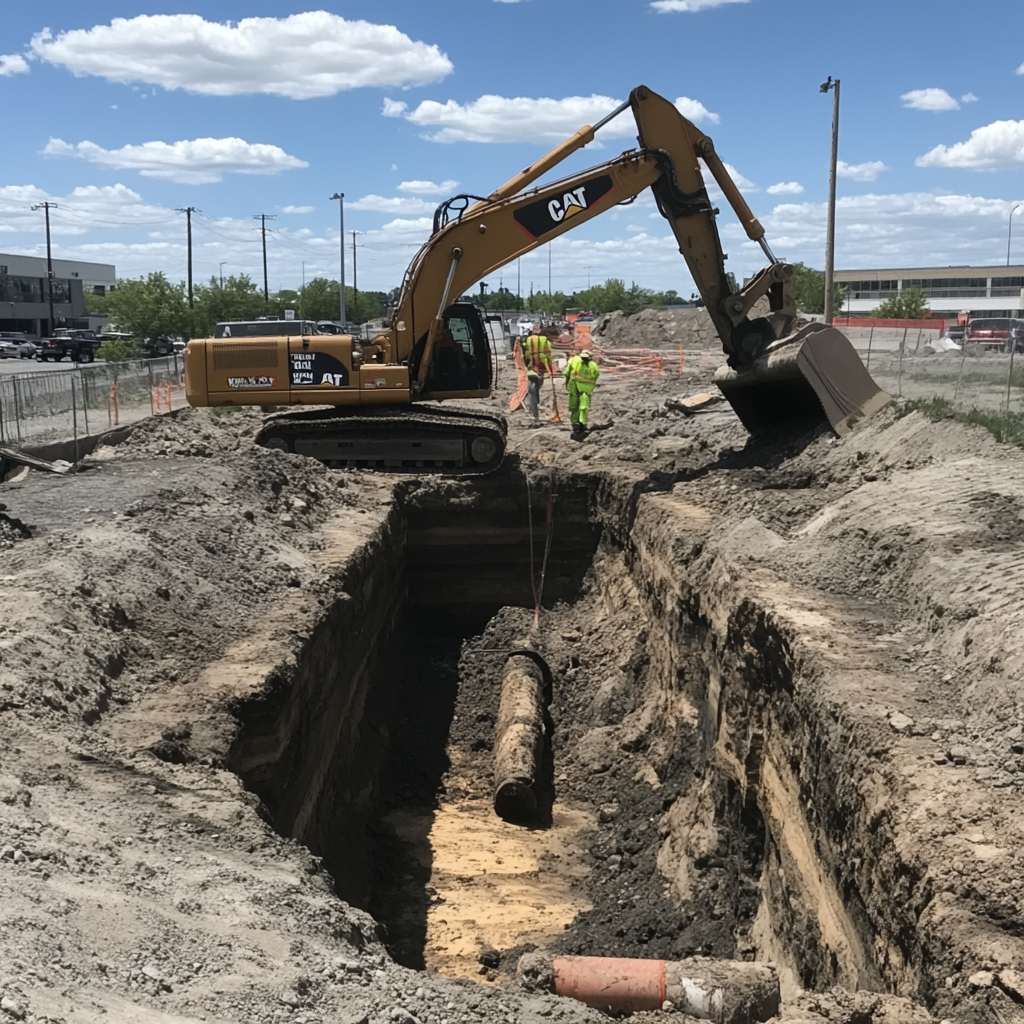
Hiring a professional excavation contractor like Indepth Excavation brings many benefits to your project. They have extensive knowledge of soil types, safe digging techniques, and the proper use of heavy machinery such as excavators and bulldozers.
Benefits of Hiring a Licensed and Insured Excavation Contractor:
- Safety: Licensed contractors are trained in safety protocols, reducing the risk of accidents on site.
- Quality Work: Insured contractors are committed to providing high-quality work, giving you peace of mind.
- Protection Against Liability: Insurance protects you from potential liabilities and unexpected costs.
Compliance with Building Codes and Regulations:
Professional contractors guarantee that all work complies with local building codes and regulations. This is important for:
- Avoiding Fines: Non-compliance can lead to hefty fines and project delays.
- Structural Integrity: Proper adherence to codes makes certain the structural safety and longevity of your basement and foundation.
Contact Us today to get your next project’s foundation created!
Cost Factors in Basement and Foundation Excavation
When planning your basement or foundation excavation, several cost factors play a significant role in determining the final expense.
Typical Costs Involved
- Excavation Costs: Excavating a new basement can range from $30 to $100 per square foot.
- Excavating Under an Existing House: Costs $20,000 to $45,000 or more.
- Digging Around Foundations: Typically $5,000 to $15,000 or $100 to $250 per linear foot.
- Finishing Basements: Adds another $7 to $25 per square foot.
Key Cost Factors
- Site Conditions: Soil type, slope, and water drainage impact costs.
- Project Size: Larger basements require more time and materials, increasing costs.
- Equipment Used: Specialized machinery increases efficiency but also adds to expenses.
| Factor | Cost Impact |
| Soil Type | Can require special equipment |
| Slope & Drainage | May need additional grading |
| Project Size | Larger projects cost more |
| Equipment | Efficiency vs. cost trade-offs |
Tips for Accurate Estimates and Budgeting
- Get Multiple Quotes: Contact several contractors, such as Indepth Excavation, to compare prices.
- Clear Project Specs: Have a detailed plan to guarantee accurate quotes.
- Budget for Extras: Include a buffer for unexpected expenses.
